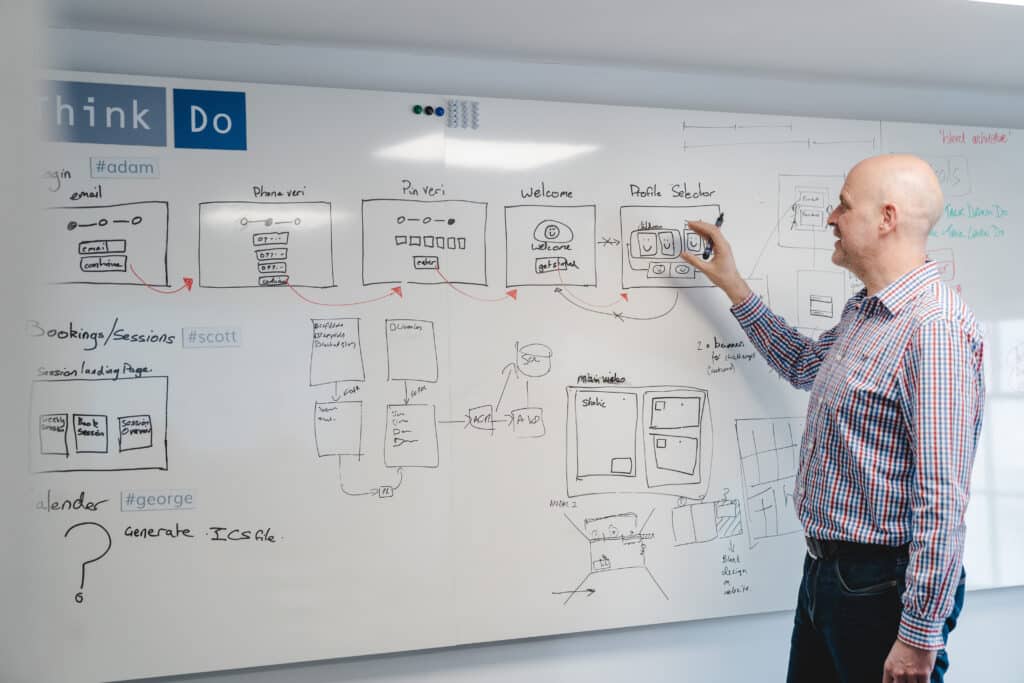Why Microsoft Cloud Native Applications Take Businesses Forward

The capabilities of the cloud have evolved tremendously since its arrival fifteen years ago. The cloud no longer only offers cost-effective access to scalable infrastructure resources, but — through the adoption of cloud-native principles — is becoming key to customer-centric innovation and growth. Organizing and managing various components within cloud infrastructure, such as resource groups and KeyVault in Azure, is crucial for ensuring a cohesive and secure cloud environment.
By migrating applications to fit the microservices ethos of the cloud, growth-oriented companies can operate much faster. Breaking down large code bases into flexible microservices is facilitating a new world of agile, customer-centric product development. Additionally, the development of intelligent apps that integrate artificial intelligence and cloud technologies is enhancing digital experiences for users.
This article will delve into why Microsoft Azure offers the best cloud-native capabilities and why partnering with Talk Think Do will reduce delivery risk and optimise the ongoing performance of cloud-native migrations.
Suggested reading: Want to know more about how legacy systems are costing your business growth? Check out our eBook.
Introduction to Cloud Native Applications
Cloud native applications are designed to harness the full potential of cloud computing principles, such as scalability, flexibility, and resilience. These applications are built using cloud native technologies, including containers, microservices, and serverless computing, which enable them to be seamlessly deployed and managed in a cloud environment. By leveraging these technologies, cloud native applications can dynamically scale to meet demand, recover quickly from failures, and adapt to changing business requirements.
The development of cloud native applications typically follows agile methodologies and DevOps practices. This approach emphasizes continuous integration, continuous delivery, and continuous monitoring, ensuring that applications are always up-to-date and performing optimally. By adopting these practices, businesses can accelerate their development cycles, reduce time-to-market, and respond more effectively to customer needs.
Benefits of Cloud Native
The benefits of cloud native applications are manifold, making them an attractive option for modern businesses. One of the primary advantages is increased scalability. Cloud native applications can effortlessly scale up or down based on demand, ensuring optimal performance and cost-efficiency. This scalability is particularly beneficial for businesses experiencing rapid growth or fluctuating workloads.
Improved resilience is another key benefit. Cloud native applications are designed to be fault-tolerant, meaning they can quickly recover from failures and continue to operate smoothly. This resilience is crucial for maintaining high availability and ensuring a seamless user experience.
Enhanced flexibility is also a significant advantage. Cloud native applications can be easily deployed and managed in a cloud environment, allowing developers to quickly respond to changing business needs. Additionally, these applications can leverage managed services provided by cloud providers, such as Azure Container Registry, which simplifies the development and deployment process.
Furthermore, cloud native applications enable developers to use open source software and tools. This not only reduces costs but also fosters collaboration and innovation within the development community. By leveraging open source technologies, businesses can build robust, scalable, and cost-effective solutions.
A comprehensive security framework
As the scale and sophistication of cybersecurity threats has grown, we’ve seen a shift from the initial scepticism of the security of the cloud to recognising that the only way to access best-in-class cyber defence capabilities is through cloud providers.
Microsoft Azure offers a comprehensive layered defence approach comprising of four elements:
- Network Security: Managing access based on IP address
- Access management: Authentication and authorisation permissions
- Threat protection: Monitoring database usage for unusual behaviour
- Information protection: Encryption-in-transit, encryption-at-rest and encryption-in-use
Microsoft Defender for Cloud wraps around these elements and continuously assesses and strengthens the security configuration of your cloud resources. Additionally, it manages compliance against industry and regulatory standards. With its roots in Enterprise software, Microsoft’s security administration is regarded as best-in-class for managing security across hybrid environments. It is also a best practice to manage configuration information securely using environment variables, which allows for dynamic binding to different backing services without modifying the code.
Microsoft Azure has a wider range of storage options as compared to competitors such as Google Cloud, meaning that not only is your data secure, it’s easily-accessible as well. Transferring data within the network is also seamless while still secure in Azure, unlike AWS whose data transfers are tedious. Considering Azure’s lower latency, lower costs and higher security, it’s the superior cloud platform when it comes to a secure, affordable and easily-accessible cloud.
Azure often leads the market for security features, like being the first major cloud infrastructure provider to offer Privileged Access Management – critical to a comprehensive security framework. Azure also offers one of the leading marketplaces for third party security applications that complement its own solutions.
Where taking on a comprehensive cloud security framework can get difficult is in having clarity on who is responsible for what in terms of innovation, migration and management. This will depend on the selected cloud deployment model (Iaas vs. PaaS vs. SaaS) and also on the exact nature of any hybrid cloud approach.
Talk Think Do helps clients design their overall cloud security approach, creating clarity on ownership, designing controls and working with internal security governance partners to address their considerations and gain buy-in. Establishing best practices for security is crucial to ensure consistent design principles and reliable application performance.
Customer-centric innovation and growth
Containers and Serverless
Enterprises that have fully embraced the cloud’s microservices architecture are experiencing higher rates of innovation while reducing risk by building and deploying smaller, isolated, iterative changes. After all, 87% of IT executives and technology specialists believe that the investment in microservices pays off.¹ Basic products are deployed into production at pace and then improved upon by adding new features in response to customer usage and feedback.
Containerisation underpins this more modern approach and:
- Enables portability — think “write once, run anywhere”
- Drives higher server efficiencies
- Offers rapid start-up times for new applications
- Encourages high scalability through orchestration tools such as Kubernetes.
This approach supports both Linux and Windows workloads, making it compatible with a wide range of applications, including those developed with .NET.
Serverless releases developers from infrastructure management and promotes microservice programming models.
Azure offers a full suite of Serverless and Container services, from Azure Container Apps to build and deploy modern apps and microservices using serverless containers, to Azure Kubernetes Service. Here, you can cost-effectively deploy and scale containers on managed Kubernetes clusters, along with many others. Interestingly, Azure was actually the first to launch serverless containers. This scalable, serverless suite also lends itself to industry-leading machine learning operations (MLOps), responsible for AI application development that results in up to 3 times the ROI. It is crucial to configure resources securely in a production environment to maintain security and integrity.
Curious to learn more about containerisation? This blog tells you everything you need to know.
Delivery
Cloud-native transformations are not only about technology – they’re also about moving to a much more customer-centric, growth-oriented delivery approach. Optimising for developer productivity is therefore critical.
Azure DevOps is regarded as one of the leading developer solutions, allowing teams to plan work, collaborate on code development and build and deploy applications. Azure DevOps is fully enterprise ready when it comes to auditing, security and permissions management, and it suits organisations of all sizes, from start-ups to large enterprises. It is important to ensure that sensitive data, such as database connection strings, are not stored in the code repository. Using UserSecrets for sensitive information management is a best practice for securing code during the development process.
Moving to a cloud-native, microservices-oriented architectural approach can seem daunting. Talk Think Do helps clients design and evaluate different architectural approaches for cloud migration and supports the redesign of applications to this new paradigm, running a build test at every stage to ensure the stability of each cloud application. Talk Think Do also helps organisations move to more agile, product-led development and delivery approaches:
- Moving to more multidisciplinary team structures
- Introducing agile disciplines
- Equipping developers with the tools and workflows to enable them to efficiently build and deploy products.
Delivering quality software that meets users’ expectations is crucial in today’s competitive landscape.
Cloud Infrastructure
Cloud infrastructure forms the backbone of cloud computing, encompassing the systems and services that support cloud native applications. This includes compute resources, storage, networking, and database services. Cloud infrastructure is typically provided by cloud providers like Microsoft Azure, which offer a comprehensive suite of services and tools to support the development and deployment of cloud native applications.
Microsoft Azure’s cloud infrastructure is designed to be scalable, resilient, and secure, providing developers with the confidence to build and deploy cloud native applications. Azure offers a range of services, from virtual machines and storage solutions to advanced networking and database services. These resources are easily accessible and can be scaled to meet the needs of any application, ensuring optimal performance and reliability.
By leveraging Azure’s cloud infrastructure, businesses can take advantage of cutting-edge technologies and tools, streamline their development processes, and ensure their applications are secure and compliant with industry standards.
Microservices Architecture
Microservices architecture is a design pattern that structures an application as a collection of small, independent services, each responsible for a specific business capability. This approach is well-suited to cloud native applications, as it enables developers to build and deploy applications in a modular and flexible way.
Each microservice can be developed, deployed, and managed independently, allowing for greater agility and faster iteration. This modularity also means that different programming languages, frameworks, and tools can be used for each service, enabling teams to choose the best technologies for their specific needs. This flexibility can lead to improved productivity and reduced costs, as developers can leverage the most efficient tools and practices for each component of the application.
Microservices architecture also enhances the scalability and resilience of cloud native applications. By breaking down a monolithic application into smaller, independent services, businesses can scale individual components as needed and ensure that failures in one service do not impact the entire application. This distributed architecture is ideal for building robust, high-performing cloud native applications that can adapt to changing business requirements and deliver a seamless user experience.
Seamless migration
Azure Migrate is a highly automated migration service that enables organisations to first evaluate their readiness for cloud migration and size up the potential benefits – whether that be of server, database or application migrations – and can manage the migration itself.² Resources and environments can be created efficiently, ensuring all elements are properly set up and ready for use.
Migrating legacy applications can seem tedious and unnecessary. After all, why not just start afresh instead? There are a few benefits that modernising your legacy apps can lead to:
- Accelerated innovation and time to market
- Improved security and reliability
- Better compatibility and agility
- Overall improved efficiency
Legacy migration with Microsoft Azure also means there is one central, shared repository, keeping everything simple and easy to access. And, all migration features are included in the subscription fee, meaning you don’t have to deal with microtransactions to get the experience that you deserve.
In the case of virtual machine migrations, a discovery and assessment phase identifies which servers are suitable for migration along with providing sizing recommendations and monthly cost estimates. Replication into Azure is managed, along with cutover into production and shutdown of on-premise infrastructure. Similarly, database migration inventories all in-scope databases along with any compatibility issues and overall readiness. For those opting to move to modern containerised services, Azure Migrate will repackage your current web app servers as containers in Azure Kubernetes Service.
Azure takes care of the mechanics of migration. However, the choice of which systems and applications to migrate, when to migrate them and how to migrate them should directly reflect your strategic ambitions for the cloud. You could be prioritising:
- Lower-risk ancillary services and specific, contained applications.
- Interoperability between public cloud and on-premise environments.
- Control and security.
Finally, Talk Think Do helps organisations define the scoping and phasing of both data and application migration to reap the benefits you’re hoping for.
Continuous monitoring
Migration is just the first step. Ongoing monitoring and analysis of your cloud resources is essential to optimising their health and performance. Azure Monitor is a centralised hub that enables the continuous monitoring and optimisation of your web applications, infrastructure and network resources. It does this by providing rich visualisations, customisable analytics and configurable proactive alerts. Azure Monitor integrates seamlessly with the .NET platform, making it an ideal choice for developers looking to leverage the benefits of .NET for building scalable applications.
Talk Think Do ensures that the right things are being spotted, and will identify areas for improvement as well as where your applications are succeeding. For organisations with limited in-house IT resources, Talk Think Do offers continuous delivery and managed application support – proactively monitoring apps for availability, security and performance. An expert team is on-hand to deal with any incidents and to support technical requests. Additionally, it is necessary to install specific NuGet packages to enable features such as Azure KeyVault support, health checks, service bus support, and Swagger API documentation.
Want to make the most of Microsoft Azure? Our comprehensive guide will take you through everything you need to know.
Talk Think Do is with you at every step
The adoption of cloud-native approaches is fast becoming a key enabler of customer-centric innovation and growth. As this article has outlined, there are good reasons for considering Azure as the preferred cloud service provider to achieve this goal:
- Azure’s standout commitment to enabling hybrid/multi-cloud environments
- Azure’s position as a leading innovator in cloud-native microservices-based approaches
- Azure’s emphasis on developer productivity
- Azure’s focus on minimizing migration complexity
- Azure’s integration with services that support building cloud native apps
Talk Think Do has helped numerous organizations access the full growth-enabling potential of Azure. They also help clients implement solutions tailored to their needs. To see growth for your business, get in touch with us today and see how your business could become our next success story.
¹ Benefits of Microservices Architecture for Business | Digiteum
Get access to our monthly
roundup of news and insights
You can unsubscribe from these communications at any time. For more information on how to unsubscribe, our privacy practices, and how we are committed to protecting and respecting your privacy, please review our Privacy Policy.
See our Latest Insights
Working as One Team: How Our Business Analysts Bridge Vision and Delivery
When clients partner with us, they often expect engineers and designers. But one of the most powerful roles behind a successful digital product is often less visible: the Business Analyst (BA). At Talk Think Do, BAs aren’t just requirement-gatherers. We’re connectors, between vision and execution, users and features, partners and platforms. In the recent delivery…
Implementing RAG AI Search on On-Premise Files with our AI Search Accelerator
As demand for AI‑powered tools like Microsoft Copilot grows, many organisations are asking the same question: “How can we harness the power of generative AI without moving our sensitive data to the cloud?” In this guide, we’ll explain why Retrieval‑Augmented Generation (RAG) is so effective for on‑premise data and walk through a practical approach using…
Using AI to Strengthen ISO 27001 Compliance
Preparing for our ISO 27001:2022 recertification, and a transition from the 2013 standard, was no small task. As a custom software company handling sensitive client data, we hold ourselves to high standards around security and compliance. But this year, we approached the challenge differently. We built and deployed a custom AI Copilot agent to help…
Legacy systems are costing your business growth.
Get your free guide to adopting cloud software to drive business growth.




